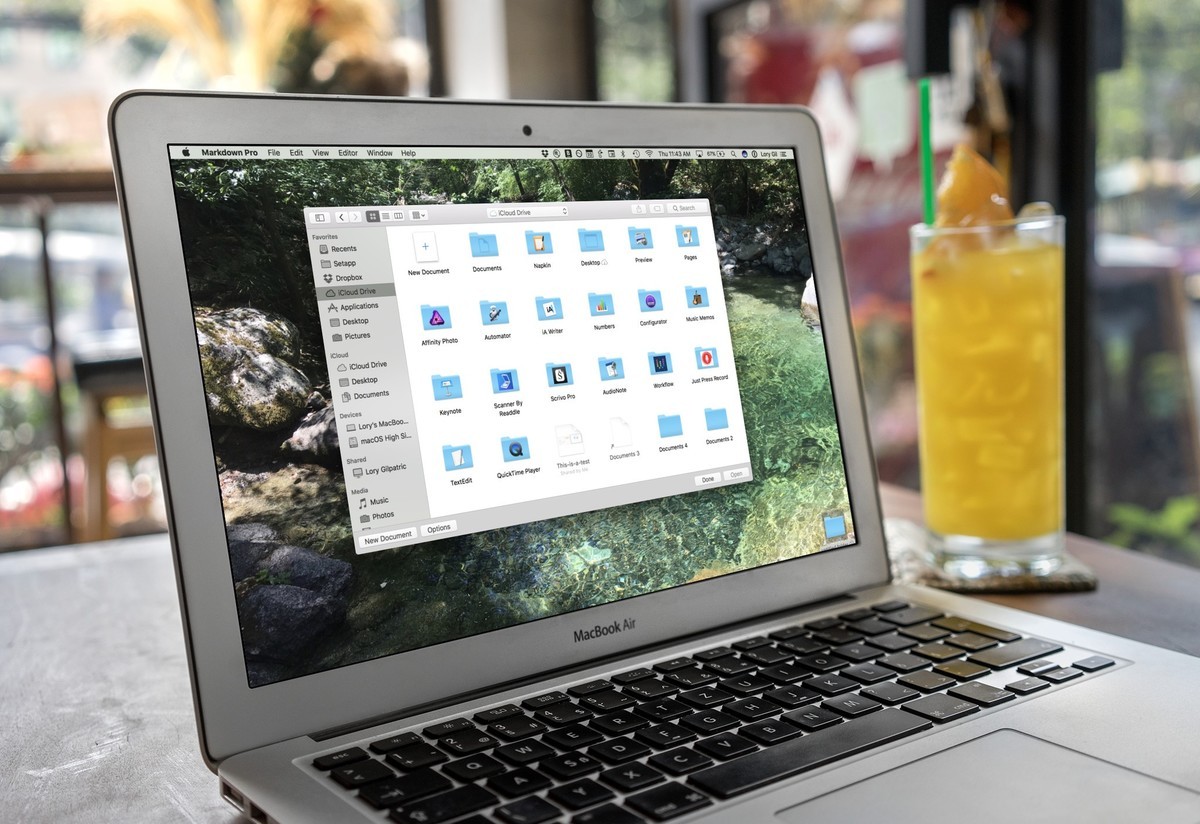

To do that, right-click the folder in question and select, Make Alias ( Figure C).įigure C Creating an alias for a folder, named DATA, in Documents. So, instead of dragging the original folder, you must first create an Alias of the original folder. You can’t just open Finder and drag a folder to the iCloud Drive listing in the left pane, because that doesn’t copy, it moves the folder. ICloud will move anything from within Documents to the cloud. Make sure you leave Desktop & Document Folders unchecked, otherwise Uncheck everything you do not need to keep in sync with iCloud. In the resulting screen ( Figure B), click Options associated with iCloud Drive.įigure B This is where you configure what is synced with iCloud. In the System Preferences window, click Apple ID ( Figure A).įigure A The Apple ID entry within System Preferences. To remove items from syncing to your iCloud account, click on the Apple menu at the far left of the top bar and then select System Preferences. Before disabling the majority of sync items, I was always receiving the out-of-space notification from iCloud. One reason I opt to not sync most of the default options in iCloud is to simply save that cloud space for more important files. As I mentioned earlier, for me iCloud is nothing more than a fail-safe backup for specific folders that are also backed up to Google Drive. I do this mostly because I don’t use iCloud to sync between devices.
#MAC OS SYNC FOLDERS HOW TO#
How to remove sync items from iCloudįirst, let’s narrow down what iCloud syncs. You should be able to successfully follow these steps, even with earlier versions of macOS. I’ll be demonstrating this process on an M1 MacBook Pro, running Big Sur 11.2.3. SEE: Research: Video conferencing tools and cloud-based solutions dominate digital workspaces VPN and VDI less popular with SMBs (TechRepublic Premium) What you’ll need Fret not, I’m going to show you how this is done. It’s not that easy.ĭon’t get me wrong, the process isn’t all that hard but Apple hasn’t done us any favors in obfuscating the task. Given this is an Apple product, you’d think this process would be as simple as right-clicking a folder and choosing Sync to iCloud. Because of that, I disable all syncing but specific folders to iCloud. I only use iCloud for very specific purposes, specifically as a backup for documents I write on my MacBook Pro. ICloud Usage Policy (TechRepublic Premium) Save more than $1,000 off a refurbished MacBook Air Image: Dimitri Otis/DigitalVision/Getty Must-read Apple coverageĪpple debuts new and enhanced watches, iPhones, AirPods If you're looking to add non-standard folders to iCloud for backup purposes, Jack Wallen shows you how to do this safely. Change to AFP protocol Pros: Easier if you have already the volume all set Cons: It's slower than SMB3.How to safely add folders to iCloud in macOS SMB filesystem client (implemented via the smbfs.kext kernel extension) led to stall and kernel panic.

Some work better than others yet most importantly this is now a know issue by Apple. I've now tested almost everything mentioned here. If you could point me out on the right direction that would be awesome!! To messy and no output to keep an eye on things. Sidenote: Yes, there is rsync terminal input and I could create a script, I've tried that, didn't get along very well.
#MAC OS SYNC FOLDERS WINDOWS#
Some I've seen so far: a) Chronosync Express - the rating is quite low, and don't seem to be arm64 based version b) Goodsync - the name rings a bell, I think I've already tried that on windows c) CarbonCopy - it might be overkill but if it comes to that, so be it d) Duplicati - I think it is more a backup solution rather that syncing but ok I will buy the software, just want to make sure it is future proof and it is optimised for M1. (I'm thinking that the app could be rsync based so I could be rest assured it would be best integrated with macOS, it this a valid point or not so much?) Of course I've searched but there are to many options out there, haven't found a compreehensive review, there is no consensus on the best one. I can do it by hand but I believe that should be a solution out there that meet the criteria. It is crucial to me to have a batch or a schedule task for it to happen automatically. Some folders can have 500GB worth of data. The dev is a great guy, and I have tested out the arm64 version which at the time was still in beta and it worked ok, but if I want to move +50GB files it is a problem.

I have numerous crash logs, it's a disaster. _ I've been using FreeFileSync in my windows machines and it works great. TL:TR I've been looking around for quite a while for an app that can sync folders (one way and two way) and keep them updated for macOS optimised for M1.


 0 kommentar(er)
0 kommentar(er)
